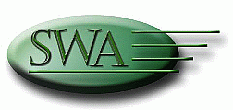
Asbestos • Lead • Indoor Air Quality • PCBs & Mercury • Mold
Ideally, an inspection will start with a review of documentation pertaining to building construction and the use or abatement of asbestos in the building. A review of original as-built drawings is most helpful and provides the inspector with clues as to the type and locations of asbestos used. Many times, asbestos products are hidden behind walls or above fixed ceilings, so drawings may be the only way to detect the presence of some ACM without conducting exploratory demolition. The documentation review should also be supplemented by an interview with the building engineer or facilities personnel most familiar with the building. These personnel may know specific details regarding building systems, renovations, and other pertinent information. Each construction period is treated completely separate from others, therefore, similar materials installed at different times will be treated as two different material areas.
Asbestos containing materials are grouped as follows:
- Surfacing material: such as spray applied fireproofing and plasters.
- Thermal System Insulations: those materials used as insulating materials on a variety of piping systems.
- Miscellaneous material: such as floor tile, cement board, and roofing material.
In buildings constructed before 1974 that contain structural steel, particularly high rise structures, asbestos containing spray applied fireproofing is often present on the steel and on metal roof decks. This material is almost always friable and susceptible to airborne fiber release. Usually it is present above suspended ceilings with debris laying on top of installed ceilings. Thus, great care is needed to assess this material without exposing the inspector or building occupants to asbestos fibers.
Asbestos containing thermal insulations may be present on a variety of mechanical systems, including heating, plumbing, and air conditioning piping and equipment installed before the mid 1970s. Because each system typically had different insulation requirements, each must be assessed separately. Heating systems, for instance, generally had more stringent insulating requirements than plumbing. Thus, these systems were often insulated with pre-form block insulation or corrugated paper insulation, while plumbing pipes may have been insulated with compressed paper or fiberglass insulation. Therefore, one system may be insulated with asbestos while the other system is not, or only on a limited basis (fittings only for example).
In many hotels, hospitals, nursing homes, and large residential buildings, strict fire code requirements necessitated the use of extensive asbestos products. In addition to thermal insulations and fireproofing, it is not unusual to find asbestos containing textured "popcorn" ceiling plasters or suspended ceiling tile in buildings constructed before 1980.
In older buildings as well as buildings constructed after the mid to late 1970s, it is possible that many non-friable types of asbestos containing materials will be present. Probably, the most prevalent material is asbestos containing floor tile and underlying mastic adhesive. In many cases, the original tile is covered by carpet, another layer of tile, or a different finish. Thus, it may be difficult to assess or sample the original tile without using destructive coring techniques through upper layers. Sheet linoleum, joint compound on wall board, cement board, and asphalt roofing materials are all examples of other non-friable ACM often present in or on buildings.
« PREV | NEXT »

 Asbestos Consulting
Asbestos Consulting